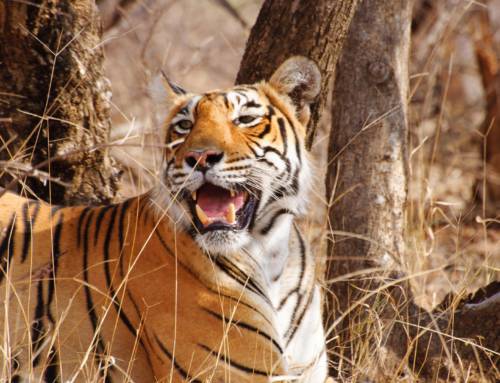Author: Vinni Jain
This is the third article from our three-part series titled Biodiversity Outside Protected Areas.
Scientists at NCBS and CWS have found that coffee agroforests in the Western Ghats are key habitats for mammals like tigers, leopards, bears, civets, etc. At least 28 species of mammals were detected in 15 plantations near Bhadra Tiger Reserve in Karnataka.
Shade-grown coffee plantations are a common occurrence around the fragmented forests of Karnataka, Kerala, and Tamil Nadu, and are trademarks of agrotourism in the Western Ghats. As coffee is planted under the canopy of native tree species, such plantations, also called agroforests, are considered an environment- friendly alternative to more intensive agriculture.
In the last few decades Indian coffee farmers have begun to shade coffee with silver oak, an exotic Australian timber-producing tree, which may have negative impacts on biodiversity. To explore the role of shade-grown coffee plantations in supporting wildlife, researchers from NCBS, CWS, and ATREE studied the mammalian diversity in 15 coffee estates at varying distances from Bhadra Tiger Reserve, a protected area in Karnataka. They analysed how proximity from the protected area and characteristics of the vegetation, such as the extent of silver oak, affected the composition of mammal communities.
Incredibly, the presence of 28 species of non-flying mammals was confirmed in the coffee plantations, including the tiger, leopard, elephant, dhole, sloth bear, jackal, sambar, barking deer, langur, palm civet, Indian giant squirrel, jungle-striped squirrel, mongoose, and large brown flying squirrel! The study found no negative impact of silver oak on mammals. This may be because the the observed extent of silver oak, around 30%, is currently low.
The number of species was found to decline with increasing distance from Bhadra, including the number of herbivores, carnivores, and forest specialists. For forest specialists like tigers and elephants the coffee plantations probably function as extensions of their vast home ranges, and are used by them as corridors or resting grounds.
In contrast, generalist mammals like squirrels and monkeys probably reside in the plantations and are less likely to be influenced by proximity to Bhadra. This study shows that shade-grown coffee plantations are indeed crucial spaces for mammals, and can increase connectivity between protected areas. The scientists thus argue for the retention of natural shade-grown coffee plantations over silver oak shade plantations and other human land uses. However, it is important to note that these coffee agroforests cannot replace natural forests.
The researchers believe that it is essential to make farmers aware of the environmental value of shade-grown coffee, and partner with them for the conservation of biodiversity outside protected areas.
Research Article: The mammalian communities in coffee plantations around a protected area in the Western Ghats, India – Archana Bali, Ajith Kumar, Jagdish Krishnaswamy – Biological Conservation, 200
You can access the original research article Here.
You can access the Kannada translation here.



